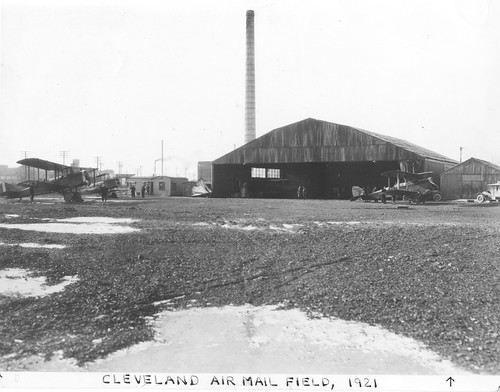 In September 1911, the United States Postal Service made one of its greatest evolutions. At the aviation meeting at Nassau Boulevard on Long Island in New York, Earle Ovington was appointed as the first aviator for the Postal Service. With his monoplane, Ovington covered a single route from Garden City, NY to Mineola, NY where he would drop his packages from his airplane for the mail carrier to pick up. These daily flights proved to be an efficient and promising method for the Postal Service. After making further aviation experiments, in 1912 the USPS encouraged congress to grant $50,000 for further testing of aviation. However, due to their speculation of air travel, congress denied the appropriation. Despite this setback, flights were flown within 16 states and airmail became increasingly popular. Due to this new trend, the U.S. government used $50,000 worth of funds from the appropriations of Steamboats or other Power Boat Services.
In September 1911, the United States Postal Service made one of its greatest evolutions. At the aviation meeting at Nassau Boulevard on Long Island in New York, Earle Ovington was appointed as the first aviator for the Postal Service. With his monoplane, Ovington covered a single route from Garden City, NY to Mineola, NY where he would drop his packages from his airplane for the mail carrier to pick up. These daily flights proved to be an efficient and promising method for the Postal Service. After making further aviation experiments, in 1912 the USPS encouraged congress to grant $50,000 for further testing of aviation. However, due to their speculation of air travel, congress denied the appropriation. Despite this setback, flights were flown within 16 states and airmail became increasingly popular. Due to this new trend, the U.S. government used $50,000 worth of funds from the appropriations of Steamboats or other Power Boat Services.During this year, the Postal Service posted routes in Massachusetts and Alaska. Unfortunately, every interested bidder was unable to obtain a suitable plane for the task. Nevertheless, the progress of airmail continued as negotiations with aircraft manufactures began.
 |
| JN-4H Jenny |
The Department quickly began plans for a trans-continental flight from New York to San Francisco. The first legs opened in 1919 from Cleveland to Chicago, with a stop at Bryan, Ohio, and from New York to Cleveland with a stop at Bellefonte, Pennsylvania. In 1920, a flight from Chicago to Omaha, via Iowa City, was established. Also, lines from St. Louis and Minneapolis to Chicago were created. The last segment from Omaha to San Francisco, via North Platte, Cheyenne, Rawlins, Rock Springs, Salt Lake City, Elko, and Reno opened in September of 1920.
Even though airmail became increasingly popular, all pilots were flying based on dead reckoning. Therefore, the mail was flown during the day and shipped on trains at night. By 1921, airmail began flying at night after ten weather stations were opened, including two Navy stations.
 |
| Cleveland Air Field (1921) |
Congress then appropriated $1,250,000 for airmail improvements. These included new ground facilities, additional landing fields, towers, beacons, searchlights, and boundary markers across the country. Also, it allowed for modifications to be made to the aircraft, such as the installation of luminescent instruments, navigational lights, and parachute flares. On February 2, 1925, a law was passed "to encourage commercial aviation and to authorize the Postmaster General to contract for mail service."
These events not only changed the methods of the US Postal Service, but they allowed for the evolution of aviation. These understandings and experiments allowed for developed technologies before the Second World War. Arguably, the advancements of airmail have been the most significant events for the creation of modern aviation.
No comments:
Post a Comment